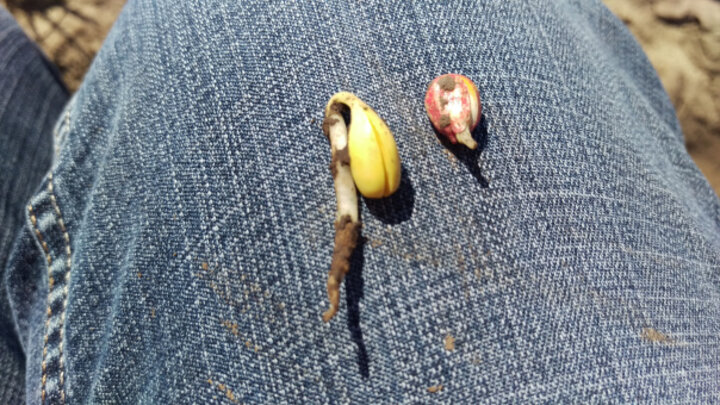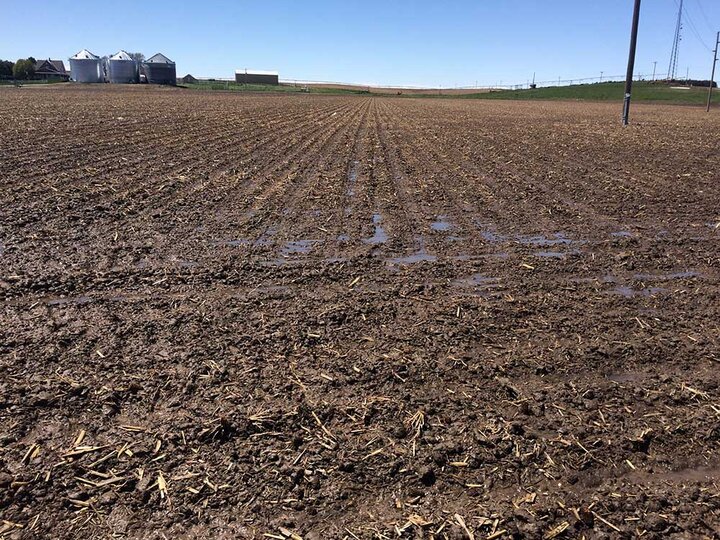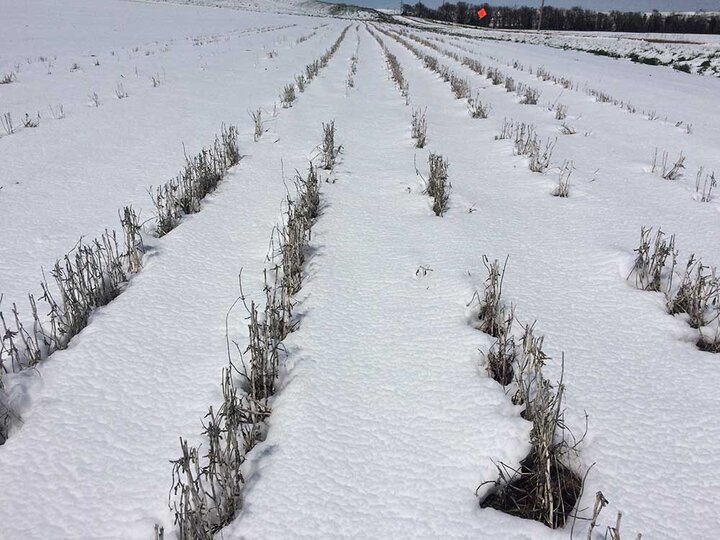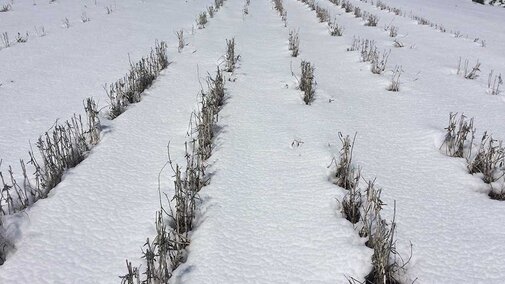

Jenny Rees, Extension Educator serving York, Seward, Clay, Nuckolls, Thayer, Fillmore Counties: Some alfalfa growers in south central Nebraska were concerned with potential frost/freeze damage in their alfalfa. To assess your stands check the upper-most cluster of buds where the growing point is located. With this week's cool temperatures, regrowth has been delayed, but most of the alfalfa plants I’ve observed have healthy buds. You may need to wait 7-14 days after the frost/freeze event to determine if regrowth is occurring from upper buds or from crown buds. You also may want to determine whether an early harvest is warranted if there’s no regrowth from upper buds. More information on alfalfa frost damage and management considerations. Find more of this field report on Rees blog. (May 5)


Troy Ingram, Extension Educator in Valley, Greeley, Sherman, and Howard Counties: Nothing is moving in the Central 4 area where we have received 3-4 inches of precipitation over the last week. The majority of it fell on Sunday as a rain/sleet/snow mix. This has created cool and saturated conditions in the fields. Soil temperatures were hovering around the 40°F mark this morning. Just less than a week ago they were around 55°F. I made a loop around the counties today and it looks like less than 30% of the fields had been planted. (May 2)
Jeff Bradshaw, Extension Entomologist at the Panhandle Research and Extension Center: The winter storm didn’t get to the Panhandle much and what snow we got has already melted. Wheat here doesn’t appear to have been affected. Wheat in the southern Panhandle had jointed and that further north was earlier. We found a few armycutworms in our light traps. Things here are pretty quiet. (May 2)
Julie Peterson, Extension Entomologist at the West Central Research and Extension Center: North Platte really missed that storm as well. McCook got several inches and wheat, around jointing, may have escaped damage. I haven't found any armycutworms in our light traps yet.(May 2)
Sarah Schlund, Extension Educator in Dawson County: The storm was worse near Lexington, where 3-5 inches of snow followed rains. Almost all the snow is melted by now. A lot of corn has been planted in the Dawson County area and a few growers are done, some are half done, and some are now waiting to get back in the fields due to the moisture. Oats are up and looking good and wheat is around jointing. We have a lot of alfalfa down on the ground. (May 2)
Cody Creech, Extension Dryland Cropping Systems Specialist at the Panhandle Research and Extension Center: Wheat is mostly okay, but there is a little leaf burn. Overall I don’t think we’ll see yield reduction in the Panhandle. Our first joint is about 2 inches above the soil. We lucked out. (May 2)
Todd Whitney, Extension Educator in Phelps County: Here in the Holdrege area we got 2 inches of moisture followed by 5 inches of really wet snow. Bertrand got about 8 inches and there was more as you moved toward McCook. Most of the snow will melt today. We have some downed wheat, but it’s expected to recover. Some was a little further along than in the Panhandle and we were seeing the first about ground joint, with heads 3-5 inches above the ground. Rye was heading. Corn is in all levels of development and emerged corn still looks good. Some is at the 3-leaf stage. (May 2)
Ron Seymour, Extension Educator in Adams County: In the Hastings area, we got good mosture that looks like it really soaked in nicely. About 80% of our corn is planted, and a few have planted soybeans. Wheat was jointed and looked very good. Alfalfa is about 18 inches, with some reports of lygus beetles, pea aphids and some alfalfa weevils. Pastures looked pretty good and will look even better with this moisture. Several have killed their cover crops. One grower wanted to delay it as long as possible to afford grazing and will be using a burndown herbicide later this week on cereal rye and planning corn. (May 2)
Steve Melvin, Extension Educator: Some corn in Hamilton County has emerged; temperatures got down to 26 F in Grand Island over the weekend. Some planting in Merrick County was slowed due to wet spots, but there was a lot of planting into dry soils. Most of the corn has been planted in these counties. (May 2)

